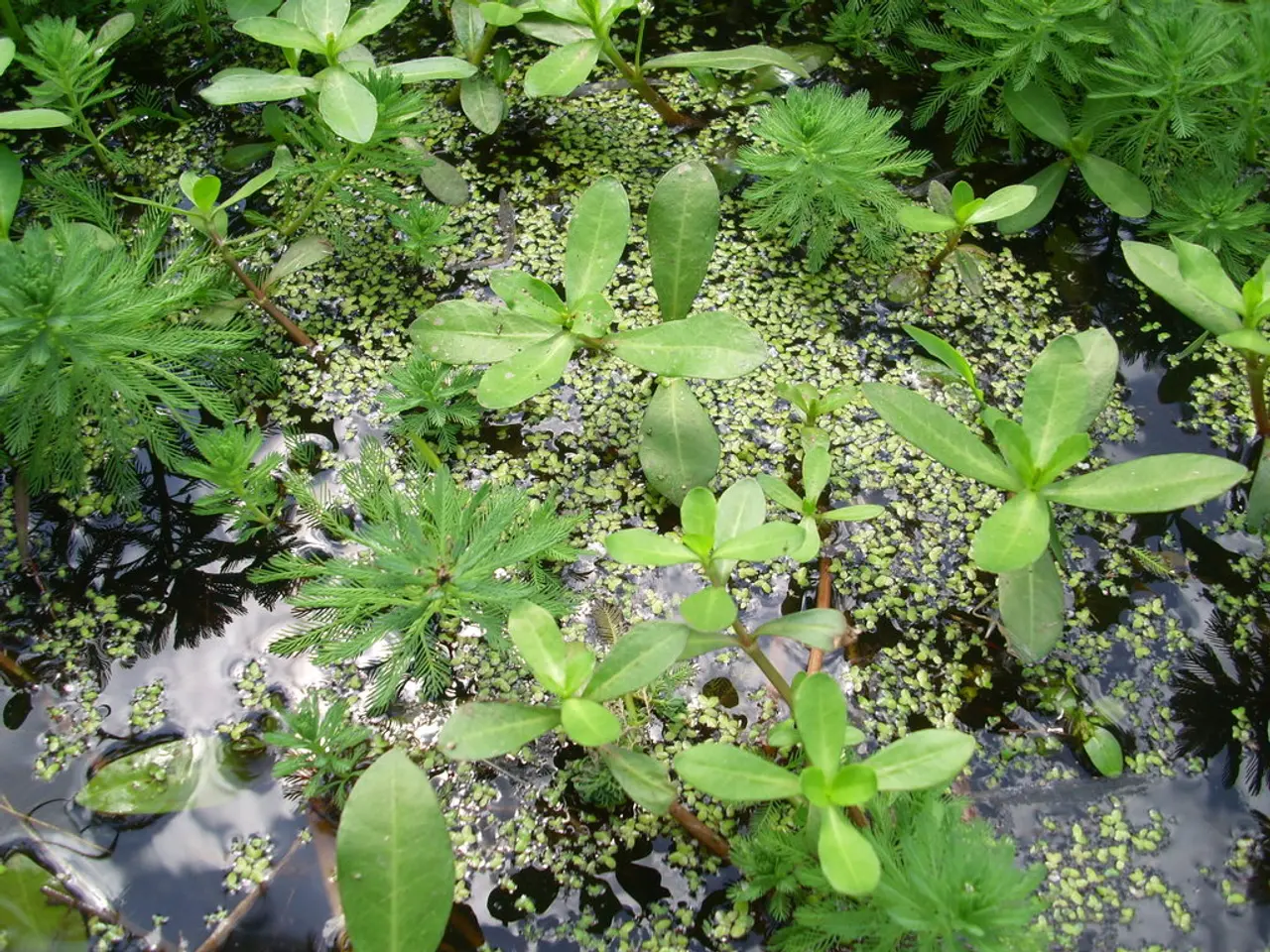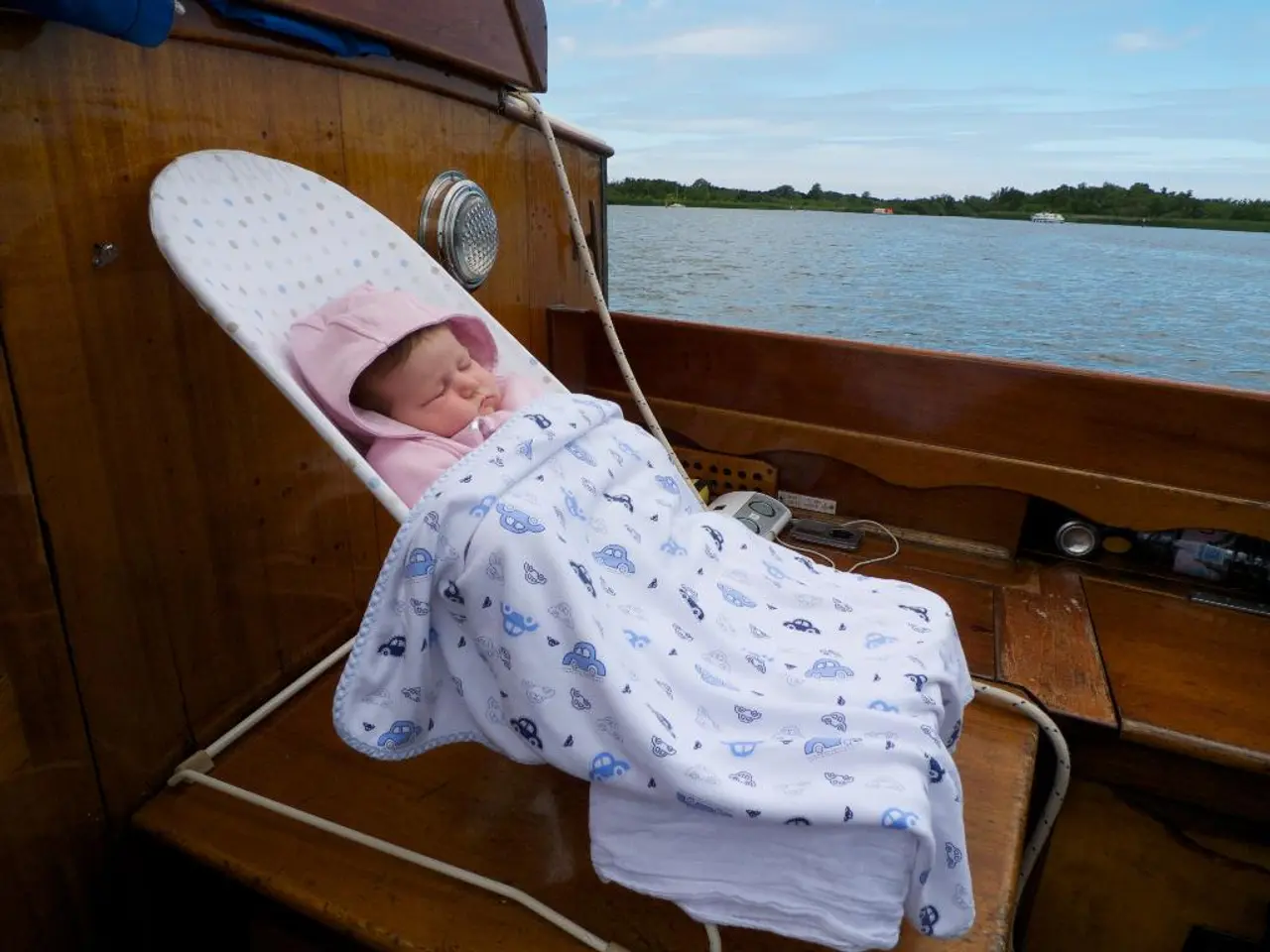Investigating Bathing Lakes' Water Quality in RLP: A focused look at blue algae and other algal contaminations.
As the temperature rises, many people flock to lakes and rivers for a refreshing swim. However, it's essential to be aware of the potential health hazards that come with swimming in these bodies of water.
During hot weather, lakes can harbor harmful organisms such as blue-green algae (cyanobacteria) and diarrhea-causing germs like Cryptosporidium, norovirus, and adenovirus.
Blue-green algae can rapidly multiply in warm, nutrient-rich, slow-moving water, forming dense blooms. Some of these algae produce toxins that are harmful to humans and animals. Exposure to these toxins can cause skin rashes, eye, nose, throat, and lung irritation, difficulty breathing, nausea, vomiting, and diarrhea. Toxic blooms can be life-threatening, particularly for children, pets, and individuals with weakened immune systems.
Diarrhea-causing germs can survive and thrive in warm water. Swallowing even small amounts of contaminated water can lead to diarrhea (gastroenteritis), stomach cramps, nausea, and vomiting, and in some cases, fever. Children, pregnant women, and those with weakened immune systems are especially vulnerable to these pathogens.
Swimmer’s ear, skin rashes, respiratory irritation, and flu-like symptoms are other risks associated with swimming in contaminated water.
To reduce your risk of illness when swimming in lakes during hot weather, it's crucial to stay informed, check local health advisories, and practice water safety. Lakes may look clear but still contain harmful organisms or chemicals, so visual inspection alone is not reliable for detecting contamination. Always check for water quality warnings or beach closures before swimming, as harmful algal blooms and pathogen outbreaks are increasingly monitored by local health authorities.
Avoid swimming in water with visible scum, unusual color, or foul odor, do not swallow lake water, and shower after swimming. Keep children and pets away from suspect areas.
Most Rhenish-Palatinate lakes have received an excellent quality rating in the current season. However, about half of the bathing waters in RLP have problems with blue-green algae from time to time. The health department warns in writing at locations where cercariae are known to occur, but they can be found in all bathing lakes.
Bathers can avoid shallow water areas and shower immediately after swimming as a preventive measure against cercariae. Cercariae are the larvae of a tapeworm that infects waterfowl and can cause a skin rash, but it is harmless and will go away on its own.
Streams and brooks are not regularly checked due to difficulty in control. Rivers like the Rhine are particularly dangerous, with several bathing accidents and fatal outcomes in Rhineland-Palatinate this year. Diarrhea-causing germs can multiply in rivers and streams as well as lakes, especially during heat and low water levels.
Despite the risks, a day at one of the more than 60 official bathing lakes in Rhineland-Palatinate can be enjoyable if safety measures are followed. Always remember to swim safely and stay informed about the quality of the water you're swimming in. Enjoy the summer, but prioritize your health and safety!
- Maintaining health and wellness is crucial while enjoying outdoor activities, such as swimming in lakes, due to potential threats like blue-green algae and diarrhea-causing germs.
- Fitness and exercise can be beneficial for overall health, but it's essential to be mindful of the water quality, as contaminated water can lead to infections like Swimmer's ear, skin rashes, and stomach problems.
- To ensure skin care and nutrition, avoid swallowing lake water and shower after swimming, especially in bodies of water where harmful algal blooms or pathogens are present. Additionally, stay aware of local health advisories and water quality warnings.




